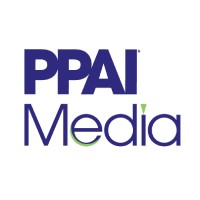These quick updates were provided to PPAI’s Product Responsibility Action Group during its October 2025 meeting by Karolyn Helda, QIMA:
United States
- The nomination of a potential new commissioner at the CPSC suggests that previous plans to roll the agency under the auspices of the Department of Health and Human Services may no longer be underway.
- The federal government shutdown has some certifications on hold, as agencies have suspended most operations due to a lapse in funding. For example, CPSC lab approvals are not being processed, and the FCC is not processing most new approvals and certifications (with exceptions for those deemed “necessary for the protection of life and property”).
- The Department of Justice has requested information on state laws that may be impacting the economy or impeding interstate commerce. This could include regulations focused on EPR, PFAS, the Ohio state stuffed toy law, etc. (Read PPAI’s latest state PFAS update here.)
- Washington state has expanded its ban on chemicals in cosmetics and personal care products to include formaldehyde and formaldehyde-releasing chemicals, which can no longer be intentionally added to these products. Enforcement begins Jan. 1, 2027 for new products, and Washington enforces its laws with a rigorous product sampling and testing program.
RELATED: State Packaging Extended Producer Responsibility Laws | PPAI White Paper
European Union
- The EU Chemical Council released a revised draft PFAS rule under REACH, with updates based on thousands of comments. The new version includes three options: a full ban, use-specific bans, or strict conditions for use. The “R02” option, if adopted, proposes a comprehensive ban with phased in, use-specific exemptions.
- The proposed rule includes a total fluorine threshold of 50ppm. Anything greater than 50ppm may trigger a requirement to prove that PFAS isn’t the source of the fluorine.
- The new draft also includes a provision for phasing out PFAS in recycled materials.
- EU Directive 2025/1892, published in September 2025, establishes mandatory EPR programs for textile and footwear products. EU member states must set up their own EPR schemes for textiles within 20 months after the directive enters into force (on Oct. 17, 2025), with PROs established and operational by early 2028.
- As in the U.S., the biggest question will be: Who is an obligated producer? This includes companies that are established in an EU member state that manufacture, import or place relevant goods on the market, as well as foreign entities that sell directly to consumers in the EU.
- The EU Council formally adopted its new toy safety regulation that will replace the Toy Safety Directive 2009/48. This legislation introduces stricter rules, including a wider ban on harmful chemicals and the replacement of the Declaration of Conformity with a Digital Product Passport (DPP). Once approved by the European Parliament, the new rules will enter into force, with full implementation expected sometime in 2030.


